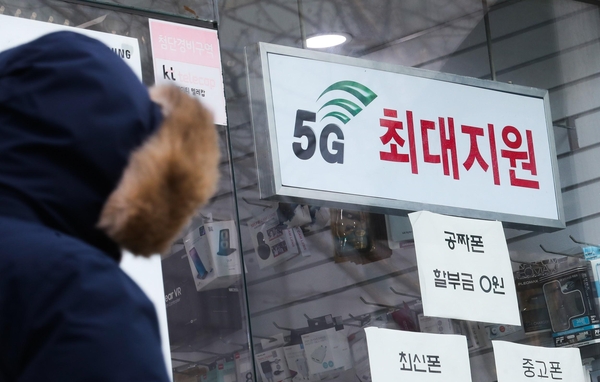Input 2021.01.26 15:31 | Revision 2021.01.26 16:22
To deploy 28GHz 5G network, dense base stations and modems are required
The government will limit it to corporate use with a huge budget
Without the high-speed 5G network,’half-autonomous driving’ will stop

As a result, general consumers using 5G smartphones have to be satisfied with the use of the 3.5GHz band service that is currently being serviced by telecom companies. It is pointed out that the era of self-driving cars is waning as 5G+, which has ultra-high speed and ultra-low delay, has been continuously discussed as a core infrastructure to complete fully autonomous driving services. The first domestic 5G service commercialized in the world in April 2019 is 4 to 5 times faster than LTE.
◇ The nationwide network is 3.5 ㎓, and’Dream 5G’ 28 ㎓ is focused on companies
On the 26th, the Ministry of Science, ICT, and ICT announced that it will hold the ‘4th government-private joint 5G+ strategy committee of government ministries’ through video, and will actively discover 5G+ demand centered on companies and expand services. Telecom companies must install 15,000 28㎓ base stations each starting this year.
As telecom companies are actually putting their hands on investment in 5G+ networks, they announced that they will also promote a ‘5G specialized network’ service that allows private operators to allocate and use 28 ㎓ frequencies limited to specific areas (spaces). It is known that about 20 companies, including Samsung Electronics, Hyundai Motors, and Naver, have expressed their intention to build 5G+ networks in specific buildings and factories for the purpose of their own research and development.
The telecom industry is in a position that it is difficult to actively invest in 5G+ because the data transmission speed increases dramatically as it goes to ultra-high frequencies, but the transmission distance is short and the transmittance decreases significantly. An industry official said, “There is a story that the 28GHz frequency cannot penetrate even fallen leaves, so the transmittance is significantly lower than that of LTE”. “Because of the nature of the propagation distance, several base stations must be installed, and labor costs to maintain them are high. It is difficult to invest,” he said.
The high price of modems that can receive 5G+ networks is another reason that carriers are reluctant to actively invest. Since there is no device to receive it after installing a base station, it is said that investment can make a profit. The government has set up a nationwide network by next year for telecommunications companies that are not even investing in the 3.5 ㎓ 5G network currently in commercial service.
◇ Self-driving cars are pouring… 28㎓ national network is’agent

In addition to tracking the movement of nearby vehicles and identifying vacancy through sensors, 5G+ has been mentioned as a key technology to complete autonomous driving by playing a role in comprehensively controlling vacancy and unexpected situations that are 1km away.
An industry official said, “Currently, automakers and telecommunications companies are conducting self-driving tests after creating an environment where radio waves can be easily received by intensively building 3.5 GHz band base stations in commercial service in a specific section.” It doesn’t seem like a problem because it doesn’t seem to be a problem, but if the moment comes when the number of users increases and the number of autonomous vehicles requiring data transmission/reception increases, 5G alone may cause an accident such as delay in data reception, so a 5G+ network is needed in the long term.”
